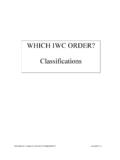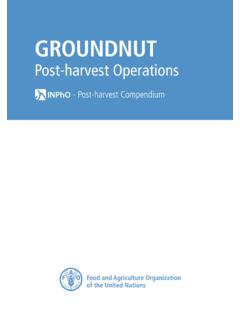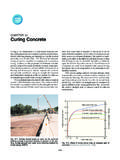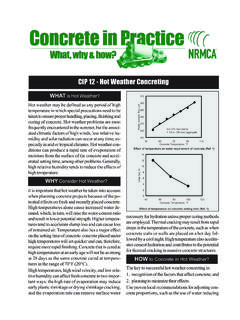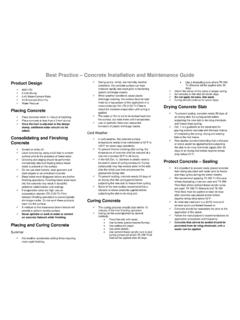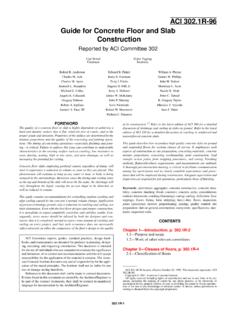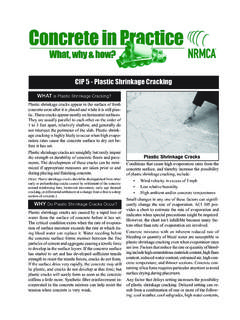Transcription of Manual for Making Leather Goods - Yola
1 Manual FOR LEATHERACCESSORIES AND LEATHERGOODSSUBRAMANIAN NATESANR etired Scientist, CLADCENTRAL Leather RESEARCHINSTITUTE, ADYAR, CHENNAIINDIA iiiPREFACEL eather in various forms has for a long time been a major export earner of India. Thegrowth in recent times of Leather manufacture and production of Leather Goods ,particularly garments have been phenomenal. Such growth stemming from the increasingdemand of foreign countries has been backed up by developments in fashion design,patterns creation and techniques of fabrication. Simultaneous support in the form ofsimple as well as sophisticated tools, equipments and machinery has been control, better management practices and response to functioning demands ofexport markets have contributed to Indian Leather and Leather Products Industryestablishing itself as a notable player in the Global , of course, is the major input for the Leather Products Industry and, therefore, aknowledge or manufacture of different types of Leather is a pre-requisite for undertakingproducts Making .
2 Further to produce quality Leather products, floor-managers and shop-floor workers are required to master various techniques of fabrication and follow theadvances in products Making . Whenever needed, they have to be exposed to differenttypes of tools, machinery, auxiliaries and techniques of application based on criteria suchas standardization, quality, fashion and present Manual addresses itself to this task by presenting scientific material in aneasy and readable manner. In this working Manual , different chapters have been devotedto the process of Leather Manufacture, accessories, various tools, different types ofmachinery and their operational methods and working methodology in practice withsuitable illustrations. Recent Technological advances in the products Making have beenindicated to stimulate the interest of those involved in designing, author has made a sincere effort to describe in detail the fundamentals of leathergoods manufacturing.
3 The author also briefly introduces the fundamentalsof garmentsmanufacturing and wishes that the readers would utilize this basic knowledge along withthe existing sophistication and technological advances in the manufacturing of leathergarments. It is the earnest hope of author that the utility of the Manual as a classroom textand a working Manual will be enhanced by its constant exposure at the levels of workers,floor-level managers and students being trained in differentcentres of Author wishes to acknowledge with thanks all the support he has been received fromDr. T. Ramasami, Director, Central Leather Research Institute and the heads of LeatherGoods, Leather Garments and staff ofCentre for Leather Apparels / NATESAN ivACKNOWLEDGEMENTI express my sincere thanks and gratitude to DR. ,Director, Central LeatherResearch Institute, Chennai, for providing me with all resources to help successfullycomplete A Manual for Leather accessories and Leatherwear.
4 My wholehearted thanks and deep sense of gratitude , formerHead, Centre for Leather Apparel and Accessories Development Division, CentralLeather Research Institute, Chennai for his valuable guidance, suggestions and thoughtfulcomments in ensuring this Manual meets the needs of the students taking course in themanufacture of Leather Accessories and Leatherwear. I am also grateful to him forproofreading my rough draft and adding to the accuracy and depth of the am elated in myendeavour to express my gratitude andDr. former Deputy Directors and Tannery Chief of Central Leather ResearchInstitute, Chennai, for their guidance, technical editing, suggestions and encouragementin my effort to write the Manual . They have been a tremendous source of inspiration forme in many sincere thanks and gratitude to lateMr. Basappa,Assistant Director, CLADD ivision, Central Leather Research Institute, Chennai for his valuable contribution,suggestions and guidance inLeather Craft Works in the sincere thanks toMr.
5 S. Ramakrishnan, Head and all the staff members of Centerfor Leather Apparel and Accessories Development Division, Central Leather ResearchInstitute, Chennai for providing me facilities and technical assistance to write , I would like to thank my wife for encouraging me to get this Manual completed. Ialso would like to thank my sonDr. N. Subramanian and my grand sonC. Suprathikfor their technical support and assistance in bringing this Manual to alsolike to acknowledgeMr. C. Krishnan, nephew, in helping to publish the Manual on-line. vProcessesof Leather manufacturing1 Processesof Leather manufacturing2 Processesof Leather manufacturing3 PRE-TANNING operations : curing , wet-salting and dry-salting:Once the animal is dead, bacteria begin to be active and putrefaction sets in. The processknown as curing , in which the bacterial action is getting inhibited temporarily, preservesthe hides and skins, which are removed from the carcass.
6 During the process of curing ,the skins are dehydrated and unfavourable conditions are created for the bacteria to is done primarily by the application of common salt ontheflesh side of the skinusing about 30 40% on the weight of the skin. Sometimes, the skins are dipped in asaturated brine solution and piled. In countries like India, drying in sunlight known asflint drying is done to remove the moisture( ). : CuringTrimming and assorting:The cured skins, which arrive in the tannery, are firstsorted out and trimmed. In the caseof skins, they are ripped open and in the case of hides, they are cut into sides or processedas full hides as per the :The next sequential operation is soaking of the skins in pits/paddle/drums( }.Preservatives and wetting agents are added in order to accelerate the processes of soakingand to prevent the bacterial action in the presence of water. During the process, thedehydrated skin is hydrated back and brought to the original condition, which existedwhen the animal was Leather : SoakingLiming:During this process, chemical agents like lime and sodium sulphide are used to help inloosening the hair, open up the fibre structure and help in removal of the flesh layer andthe other unwanted materials not required for Leather processing.)
7 This is also done in pitsor paddle or drums. After this operation, the hair and the adhering flesh are removed andthe raw material at this stage is known as pelt( ).After liming, the pelt is pressedthrough a machine to remove fleshly tissue from the flesh : UnhairingDeliming:All most all tannages are carried out at low pH values. The lime that is present in theskin should be removed by the process known as deliming in which mild organic acidsalts of weak bases like ammonium chloride, ammonium sulphate, etc, are used. TheProcessesof Leather manufacturing5lime is removed from the skin and the skin is ready for subsequent operations of bating,pickling, :This is carried out by enzymatic process in which some of the unwanted materials getremoved and the pelt presents a cleaner appearance. This is mainly done for the :The process of pickling is mainly done to condition the pelt to a stage at which they canbe preserved for a long time and also can be assorted for different types of tannages.
8 Thisis achieved by treating the pelt with common salt and sulphuric acid and pH of the pelt isbrought to about to and sometimes preservatives are also added to keep the skinswithout any further damage for quite a length of operations :Tanning:Tanning can be defined as the process of converting the putrescence protein material intonon-putrescence form and Making the Leather resistant to moisture agents bring this about and these chemicals are known as tanning tanning processes viz. vegetable tanning, mineral tanning, aldehyde tanning, resintanning, synthetic tanning, etc. are used for tanning leathers( ). : TanningVegetable tanning:This is a method in which the pelt is treated in an infusion of leaves/barks/ tanning:In this method, the most commonly used material is basic chromium sulphate and tosome extent salts ofaluminium and zirconium.
9 Apart from it, other tanning agents likeformaldehyde, fish oil, resin tannages, etc. are used. There are characteristic differencesbetween mineral tannages and vegetable tannages. The chrome-tanned leathers are soft,Processesof Leather manufacturing6supple and stretch more than the vegetable tanned leathers. These tanned leathers arecalled wet-blue, which is the intermediate stage of Leather processing( ). : Wet-blue leathersAldehyde tanning:Aldehyde tanning is used to produce very soft white washable leathers usually fromsheep or lamb skin with the grain split or shaved off. The leathers so produced are usedfor water washable gloves and tanning:Resin tanning gives filler effect and grain tightening effect and reduces stretch. Itprovides good light fastness suitable for white tanning:Synthetic tanning gives silky touch, tight and fine grain, surface feel, high degree ofsoftness, light fastness, etc.
10 To the Leather . It is used to produce high fashion leathers, so produced depending upon the specific characteristics and nature, areused for different purposes. As a result of this variation in properties, in commercialpractice, more than one tanning agent is applied, so that advantageous properties ofdifferent tannages could be imparted to the tanning, the leathers aresubjected to post-tanning operations viz. sammying, splitting and shaving, neutralization,retanning, dyeing, fat-liquoring, setting, drying and operations :Sammying:Sammying is the process in which excess moisture is squeezed out by pressing throughlarge rollers under pressure( ).Processesof Leather : SammyingSplitting and shaving:The wet blue Leather is split through the middle to the required thickness for end further reduction of thickness can be done by shaving off the unwanted fleshymaterial of the Leather ( ).
